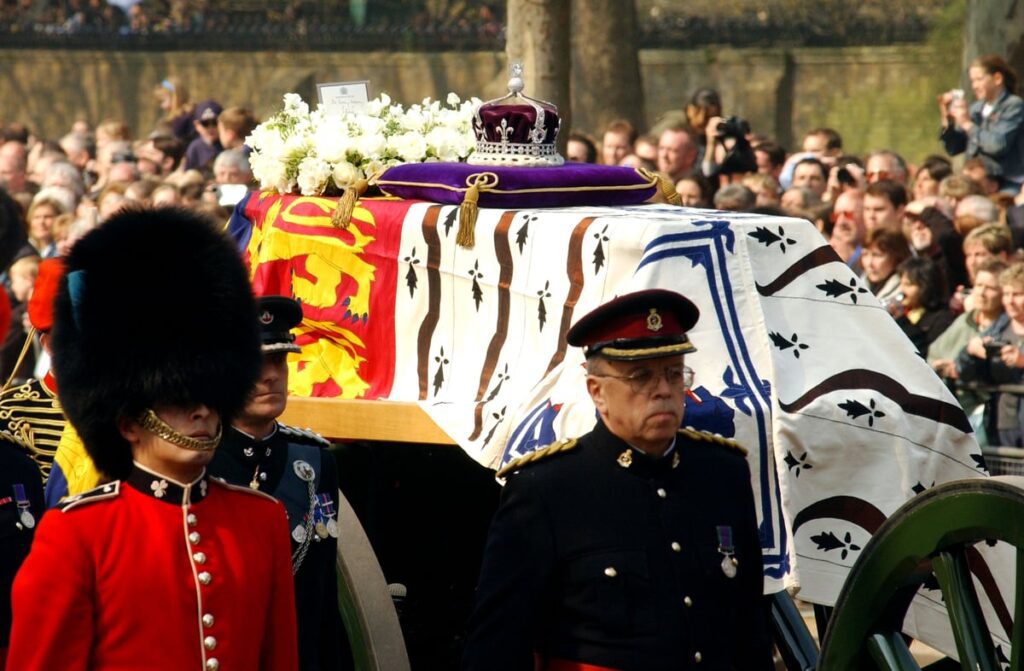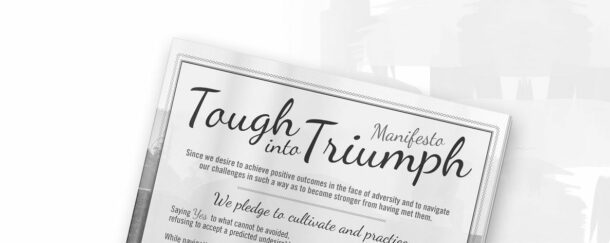
Queen Elizabeth’s four adult children walk slowly behind her casket as it moves through the main street of Edinburgh Scotland. Throngs of British subjects and their guests stand in respectful silence. The only audible sound–the clomping horses’ hooves on the street’s cobblestone surface, as the horses pull the hearse toward the cathedral.
No matter what television channel, what news or magazine show we’ve watched this week, the central focus has been, and will continue to be, the Queen’s death and the ceremonies, processions and pageantry arranged to respond to it. We’re told the 96-year-old queen has pre-arranged every detail of what will take place, as any good elder ancestor should do. Since we citizens of the U.S have frequently witnessed the pomp and circumstance of many British ritual extravaganzas, we know to expect an elaborate fuss, befitting the 1000-year-old traditions of the Queen’s ancestral house of Windsor. In contrast, as far as emotional expression goes, the British people are known for their buttoned-up manner, their stay calm and carry-on attitude, and the Queen had developed these practices into the highest of arts.
Tradition is always a guiding framework for community rituals and celebrations of personal milestones, such as graduations, weddings, and funerals, but when the milestone marks the end of an era for a nation, and the person being remembered has been a global celebrity for close to a century, the scale of the occasion has finally caught up with the scale of the traditional pageantry of royal ceremonial practices. The root meaning of the word “pageantry” is “scene of a play,” so a funeral must tell the story that the grieving community needs to hear as they carry on without their beloved. The scene and emotional heft of this play will be carried by the arts themselves as they are so displayed.
According to artist, Marilina Maraviglia, “art is the deliberate process of arranging elements in a way that appeals to the senses and the emotions,” so the arts are central to the ceremonies, – music, costumed processions, songs, and candle lit spaces, (and for we television viewers,) film footage telling and retelling the stories of Elizabeth’s life at its various ages and stages. Who was this woman? Grandmother to a nation? Stateswoman to a troubled world? A dog lover, an international symbol? Her image has been connected to wars and treaties, national and international disasters, and efforts to remediate them. She has met with virtually every significant world leader who was ever involved in a large scale political or social event for nearly a century, (both the good guys and the bad guys), so through the years, to most of her public, she has represented comforting familiarity, a calming presence in a sea of tumultuous social change.
Though we did not know her personally, we feel that we know her, because through the media, we know a great deal about her. Depending on who we are, we connect with different aspects of her. I connect with her as a grandmother, and see one of her finest hours, (though she was roundly criticized for it at the time), as the rare occasion when she stepped aside from her royal duties to be with her two young grandsons, protecting them from the press as they grieved the sudden death of their mother Diana. It’s an important element of this story to remember that Diana died in a traffic accident while being pursued by media paparazzi.
As a person of divided Irish heritage, (my father Protestant Irish, my mother, Irish Catholic,) I especially appreciate her efforts at peacemaking during a relatively recent visit to Northern Ireland, the land of “The Troubles.” But not everyone saw her as beloved. In my own community of Pittsburgh, when it was announced that she was dying, a university professor, who saw her as befriending treacherous evil leaders, took to social media to wish that her last hours be filled with pain and suffering. Clearly, our reactions to a person’s death reveal a great deal about us, and who we are. Reviewing the deceased person’s life provides us the opportunity to connect the past and present in our own lives– “where were you when..?” And as happens through participation in any funeral, there are reminders of our own eventual demise. As the question poet John Donne’s poem asks and then answers “For Whom the Bell Tolls?..“it tolls for thee.”
Death is the great equalizer, and nothing demonstrates that more clearly than the death of Queen Elizabeth II. You cannot be rich enough or powerful enough to avoid dying, so then the lessons learned from a funeral, especially the life of an elder, become what does a life well-lived look like? Funerals often attempt to answer that question for those that remain. The grief literature speaks of “a good death” an element of which is mentioned frequently in newspaper obituaries, “she died peacefully surrounded by members of her family.” This apparently happened for the Queen, her daughter Anne mentioning what an honor it was to be present with her at the end.
When a person has had the forethought to compose and curate their own funeral as the Queen has done, they take a shot at arranging what they want their legacy to be. In her case, connection to duty and service as a response to what birth and destiny gave to her, along with knowledge of what she loved and what inspired her life told through the songs and ceremonial music, the eulogy, and stories of those who knew her best. For any of us, if, after a long life, there are people still willing to speak positively about us, and turn out to celebrate our life, we may consider these a confirmation that our life has been well-lived.

